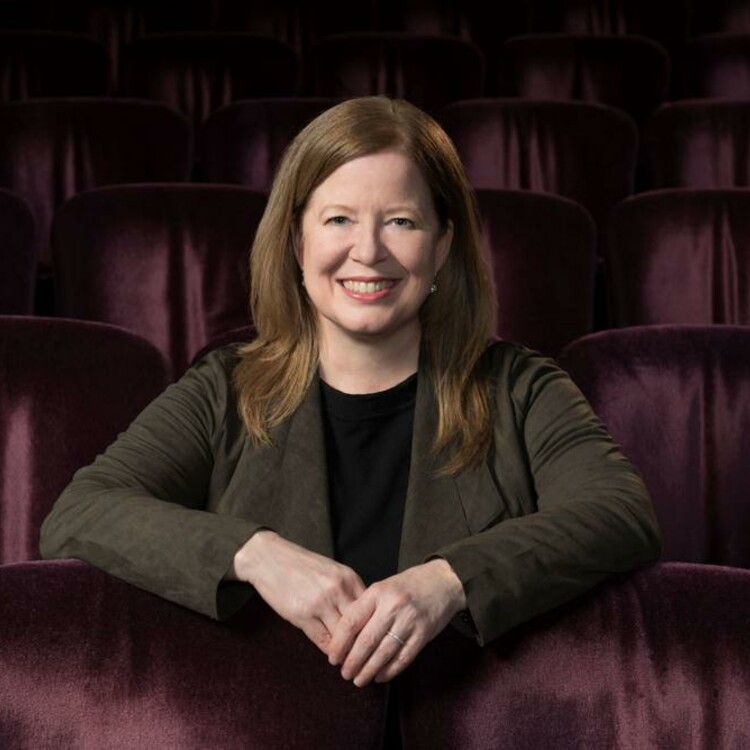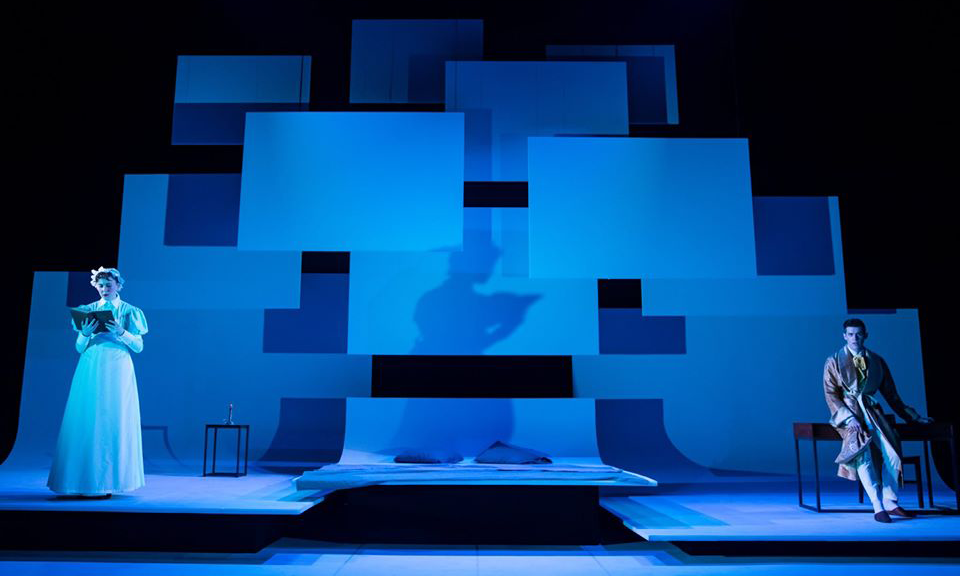Al: Did that involve listening sessions, not only interacting with staff and board members internally, but audiences and donors externally? At the university level and at the Wirtz Center, much of my time has been listening to people to figure out who we are serving and what we can do as an art center to promote certain conversations.
Jennifer: Those are good questions to ask. I believe in doing a lot of listening everywhere I go—to people both outside and inside your organization—really hearing them and being responsive. It’s an important part of building trust and engaging people in the work.
Al: When I was a Yale Fellow with you, when you were managing director at the Guthrie Theater, I wanted to figure out how someone starts in a managing director position at a new organization. One lesson I took from you was that ability to listen and ask questions of people, and to start that way in a new organization to get your bearings.
Jennifer: The job isn’t about just what the managing or artistic director thinks something should be. It’s very important we understand what is uniquely needed at the particular moment in time by the specific organization and community. It always starts with listening. At A.C.T., I’ve met with every staff and board member. We also have a training program, so we have heard from all of our core faculty members and students. What is it they value that A.C.T. does really well? What do they think the challenges are for A.C.T., and what are some of their ideas for the future?
It’s most important to really understand what you need to be doing in your local community, because that’s who we exist to serve.
Al: That’s difficult to figure out, what the resources and priorities are, and then what is going to come later. For me, it’s been good to hear the staff and faculty want change, but it’s been hard to sit in my position and say, “What change can I start with, versus what things will take a long time but that I am eager to address?”
Jennifer: Is it clear what type of change they want?
Al: It’s about who we are, and we have to continue to refine the mission. Sometimes we have to ask, “What mission and values do we have as a staff and organization? And how do we keep holding that while also doing the day-to-day?”
Jennifer: One of the challenges inherent to so many of these leadership roles in theatre is the need to be able to step back and see the big picture, while also being able to execute and move the smaller things forward.
Al: Have you ever found yourself too focused on the details and then having to intentionally step back and say, “Wait a minute, what’s the bigger picture here?”
Jennifer: For sure. Almost all of our theatre organizations are under-resourced in terms of staff, which means everyone has a lot on their plate. It’s very easy to focus on the day-to-day and not step back. What works best for me is having the discipline to block off time and focus on the bigger projects.
Al: I’m seeing from other managers that keeping the artistic vision and excitement at the center of what we do is key to remembering those priorities.
Jennifer: The only reason I’m doing what I’m doing is because I believe passionately in our art form. I love live theatre. I think it really changes lives, helps us learn about ourselves and each other, and builds empathy and stronger communities. So for me that’s always present.
Theatres and non-profits are mission-based, purpose-driven organizations, and people want to be a part of them when they’re excited about the artistic work. It’s really important that’s kept front and center in our leadership.
It’s very easy to focus on the day-to-day and not step back.
Al: Being early in my career, I see that theatre management and artistry go hand in hand. I’m finding management colleagues in my generation very interested in how management and artistic practice cross over with one another. I don’t know if that was ever a thought when you were starting out, but that’s what I feel now—there’s more of a need to break down the silo between manager and artist.
Jennifer: I agree that they should not be bifurcated or siloed. With organizations that have dual leadership—artistic and managing directors—it is the responsibility of both roles to have a handle on what’s going on artistically and with the business of the organization. It’s important that it’s integrated. I don’t think it would work otherwise.
Al: I guess my perception is that not too long ago it was more definitive. Whereas now I see the challenge being, “How do I understand more about the artistic process and needs in order to put resources in place to make the art or the practice of the art better?”
Jennifer: And then how do those with whom you’re collaborating, who are driving artistic decisions, understand the financial constraints we face and get creative in partnering with you to work within those? It goes both ways.
Al: Everyone in the organization needs to feel as if they have some knowledge of both. How can everyone feel empowered to speak to the mission of the organization?
Jennifer: You’re talking about having amazing alignment, right? Where everyone understands all of the elements of what you’re trying to accomplish and how you’re structured.
Al: And realizing just how exciting, but also how difficult, that alignment can be—to get people to remember the art, mission, and vision. How does that not just rest everything with me as the managing director or potentially for you and Pam as the co-leaders? Sometimes I can see it so clearly and part of the job is convincing others to see it too.
Jennifer: Yeah. And I by no means have done it perfectly. I think you have to say it, and repeat it over and over and over to the point where you think people don’t want to hear it anymore. It takes a while.
The lessons I continue to learn are around change management. Some of that is around how you keep that message of the vision out there. How you find ways to develop your organizational culture and bring people together to communicate and gain a shared understanding of where you’re heading. Where you embed your values in your hiring processes, your evaluation processes, the way you make programmatic decisions, the way you evaluate results.
External forces are not as supportive of the arts as perhaps they were decades ago. And I think we have a more challenging time making the case for why theatre and the arts are essential.
Al: Theatres, no matter their size, are becoming more and more complex, and the skills and acumen needed to run them is massive, but it’s also accessible to people through apprenticeship or graduate training. Being in this seat, I understand the complexities and how huge it is to undertake a theatre operation. I’m assuming that complexity exists because of the age we live in, but maybe it has always existed in our field and has just evolved over time.
Jennifer: I assume it’s always felt challenging and complex, but I tend to agree with you, it is more complex. External forces are not as supportive of the arts as perhaps they were decades ago. And I think we have a more challenging time making the case for why theatre and the arts are essential. There were generations that used to directly to support theatres, but subsequent generations don’t have the arts as their priority.
National funding used to be much more significant. And there’s increased competition for people’s time over the past almost twenty years. That’s significant in the lifespan of our theatres. We’re up against everything from going to a restaurant to watching Netflix on an iPad at home.
How do we ensure we are relevant and also compelling enough to bring people together for this shared experience? My experience is that, decades ago, things were led in a much more hierarchical way, and information was protected, not shared. I’ve always been a collaborative and transparent manager and leader, and I think that is part of my generation. Going forward, people hunger for transparency and to be in the know.
Navigating those organizational culture changes has been complex. And all the equity, diversity, inclusion, and anti-racism work that we are doing in different ways is a big part of our work, our shared commitments, and what will make us all better. It has deep impact in our communities.







Comments
The article is just the start of the conversation—we want to know what you think about this subject, too! HowlRound is a space for knowledge-sharing, and we welcome spirited, thoughtful, and on-topic dialogue. Find our full comments policy here